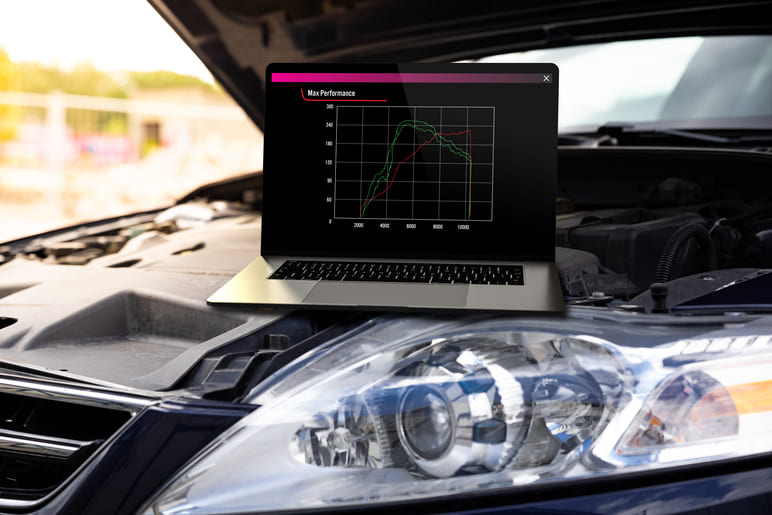
Ask someone to imagine what car maintenance and performance enhancement looks like and chances are they’ll think of a person in grease-covered overalls using various tools and fluids to tweak the mechanical parts of an engine or swap an old rusty part for a gleaming, metallic new one. Performance is traditionally thought of as something which comes from increasing a car’s mechanics – fixing, modifying, or otherwise tinkering with the physical components of a vehicle.
For a while now, however, it isn’t just upgrading the mechanics of automobile engines that can increase performance, but the electronic and computer technology, which is now an integral part of the cars we drive. In one of the opening scenes of ‘The Fast and Furious’ – the first installment of the hugely popular car film franchise – the drivers tapping away on their laptops, seeing charts pop up and somehow altering the performance of their over the top supercars at the push of a button seemed like a work of science fiction and something that regular car owners would never experience. But this is something we can experience. This something is engine remapping.
What is engine remapping?
Engine remapping (also covered under the broad term ‘tuning’ in the USA or known as ‘chipping’) refers to the process of altering your car engine’s computer or the engine control unit (ECU). The ‘maps’ and ‘modes’ are a range of data tables which consider both what is happening with the car in real-time and the driver’s input to work out what to do with the engine. They are essentially computer algorithms which are running behind the scenes while you’re driving and having an impact on numerous engine operations, such as ignition timing, sensors, air/fuel ratio, and turbocharging boost pressure.
Like software on a phone or laptop, this software which dictates how the engine functions can be modified and re- or overwritten in order to change how the car works and to optimise the performance of your car

When performing an ECU remap we typically access the cars ECU via the car’s On Board Diagnostics port (or simply the OBD port). Since around 2002, a new standard, OBDII has made directly accessing the information stored on the car’s computer accessible with the right equipment and protocols (an OBD scanner), allowing drivers to see all of the engine’s operations and how they are being performed.
The ECU can be remapped to alter almost any of its functions in a way that a driver might want to. Professional F1 or rallying race teams use engine remapping extensively. They will often have a variety of different engine maps that demand various different things from the engine. For example they can alter how much torque is produced when the throttle is opened to accommodate for the possibility of wheel spin when accelerating out of corners, to deal with wet weather, to take high altitude into account, or maps to save the engine power in qualifying rounds. It’s all about customisation.
For the average driver, this isn’t a realistic possibility, as it requires lots of trial and error to tune an engine from scratch and determine how to affect the different parameters and reconfigure the software. Luckily, engine remaps can be bought and installed for you. You can choose from a range of generic engine remaps offering improvements or alterations, or custom remaps. By the time you have an ECU remap installed in your car, it has been thoroughly tested and developed to deliver the engine’s optimum performance.
Why might I need to remap my engine?
It might not be immediately obvious why you would want to alter the way your car works. If the car is already installed with software from the manufacturer, surely this is going to give the car optimal performance? This would be logical, but unfortunately it is not necessarily the case.
When a manufacturer develops a new car they have to consider all of the possible conditions a care will face in all of the different regions where the car will be on sale. Since most mainstream manufacturers target the global market, that is a lot to take on board. This means, therefore, that instead of just optimising the ECU’s software to deliver the best performance or the most fuel efficiency they have to make compromises to the map to take into account these potential differing operating conditions. Such conditions might be owners using sub-standard fuels, extreme temperatures or altitudes, different emissions laws, and sadly even the possibility that the vehicle may not be serviced on a regular basis and in accordance with the manufacturer’s recommended instructions. If they think that poor quality fuel or engine oil will be used, for example, they could perhaps limit the performance of the engine due to the fact that operating at maximum capacity with poor fuel might cause greater emissions or poor quality oil will lead to overheating.
Slightly more cynically, it is a relatively open secret that manufacturers program their models’ ECUs so that they are not performing at peak efficiency. This is so that they can release a ‘sportier’ model with a more efficient engine by simply making small design tweaks. There is also the chance that the performance was deliberately dampened before the car left the factory simply to meet product planning objectives and specifications.

Will engine remapping benefit my car?

On the surface, it appears that there’s no lack of reasons to seek out a new map for your ECU to get the most out of your engine, but what are the specific benefits that engine remapping can offer you?
Remapping can lead to improved engine performance, which essentially means more speed and more power. The amount of fuel that is injected in the cylinders, the ratio between fuel and air, and when the spark plug ignites all affect the power that you get from the engine. These are all things that can be modified if an engine is remapped, depending on the way that programmers have designed the remap.
For example, a recent study investigated the role that the pressure of fuel injection had on performance and found that increasing the pressure of the injection increased the power of the engine by about 12%. By increasing injection pressure, the fuel particles became smaller, the atomization of fuel got better and ignition happened faster, leading to more power on the piston, greater resulting torque and a more powerful engine.
The suggested increase in horsepower of course depends on what sort of engine you have, but it could be an increase of as much as 40–50bhp (brake horsepower) for a turbo engine and slightly lower for standard engines. This means that ultimately the car does not have to work as hard to produce excellent results and overall a better performance. Many remapping services also boast an increase in torque of up to 80nm (Newton metres) and ultimately the car is going to feel a lot faster!
If the manufacturer has limited the power available to the engine, or made the throttle less responsive to limit the torque produced in the engine, a remap can make the power delivery a lot more linear, which in turn will make the vehicle feel livelier to drive and the engine more flexible.
Similarly, many proponents of remapping claim that it is possible to have a positive impact on the fuel efficiency of a vehicle too. In theory, if the car has to do less work to perform at a normal level, then less fuel will be used to reach this performance level and the fuel economy will be improved. That said, however, so much depends on the style of driving. Rushing through gears, sudden and fast acceleration, speeding and sudden braking can have a negative effect on your fuel economy, increasing consumption by up to 40%. It is unlikely that suddenly changing the software will help to counteract this. The combination, however, of remapping and smooth driving will undoubtedly offer better fuel efficiency than good driving on its own.
A good example of this could be that the improvement in torque produced by the engine after remapping means the driver no longer has to drop down a gear to maintain speed (because more torque is available at a lower rev range) on an incline or may not have to change gear as frequently in traffic. All of these little things add up to an improvement in fuel economy.
What are the risks of remapping?
First, before we get carried away with the endless benefits of remapping, it’s worth pointing out that not all cars can be remapped, usually due to their age. Typically, cars produced before 2000 are too old and don’t feature the car remapping software needed to optimise the vehicle’s performance. Those after, especially those after 2002 featuring the OBDII, will be able to be remapped.
It’s also important to understand that it is not advisable to remap your own car. Unless you happen to work as a software developer within the automotive industry or are already an industry expert, there are a lot of things that can go wrong if you do it alone. Selecting a reputable company to carry out the remapping is the best way to avoid disaster. More established businesses that provide a remapping service will offer a lifetime warranty on the replacement software, giving you a safety net should you notice any issues in the future. If you attempt remapping yourself or do not use an expert, the worst case scenario when this happens is that your car’s ECU can get completely damaged causing total engine shutdown. A new ECU is going to be a very big expense afterwards.
Engine remapping could also have a hefty knock-on effect on your insurance premiums. Historically, insurers were wary of insuring any car that had been modified and the price was increased if you had tuned your engine electronically. Nowadays this isn’t always the case, but it’s very important that you inform your insurance company of this (or any other) modification. Failing to do so means you are at risk of rendering your policy invalid if you need to make a claim. It’s worth seeing how a remap would affect your premiums before you go ahead with the procedure; increased performance may not be worth the increased prices!
If you have a fairly new car, one of the biggest downsides is that remapping your engine will almost certainly invalidate the manufacturer’s warranty. This isn’t necessarily a problem if the remap itself goes wrong as you can have a warranty for the new software itself, but if anything else goes wrong with your car and the warranty is invalid this would cause a serious headache. You could remap your car once your warranty expires, or you may be willing to take the risk – it’s up to you.
Finally, there is the possibility that in trying to achieve great performance for your engine, you end up putting extra strain on it and could damage your car. As stated above, manufacturers will often limit the horsepower and torque of an engine in the factory. The car’s standard tires, brakes, and suspension are matched to this chosen power output during the production process. So, if you want to modify your car’s speed, it could be that it won’t be able to safely deal with the boost in speed and power.
With all of these risks, it might seem like a gamble to opt to remap your engine. While this is to some extent true, with the right planning, research, and careful consideration, remapping an engine could see you make some significant gains to your performance, improve your fuel economy, and mean that you enjoy your driving even more than before.













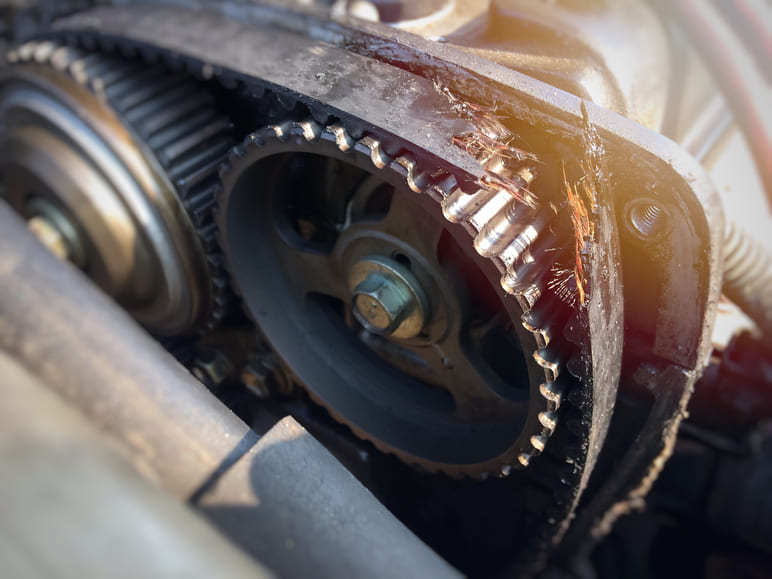

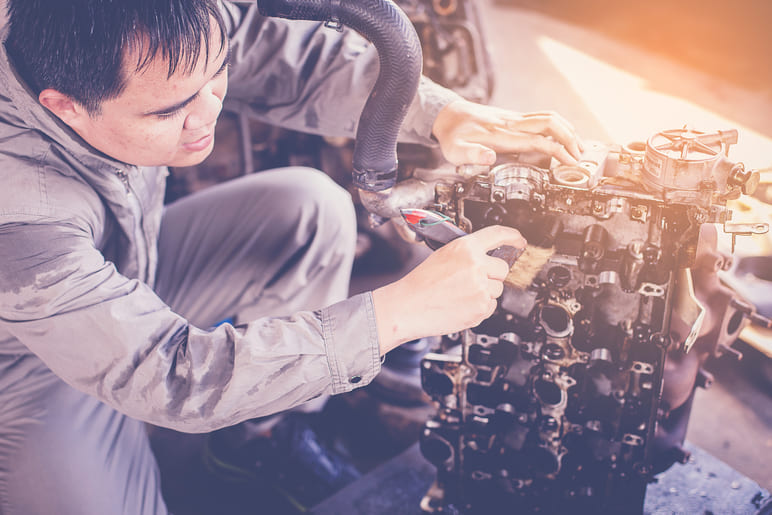
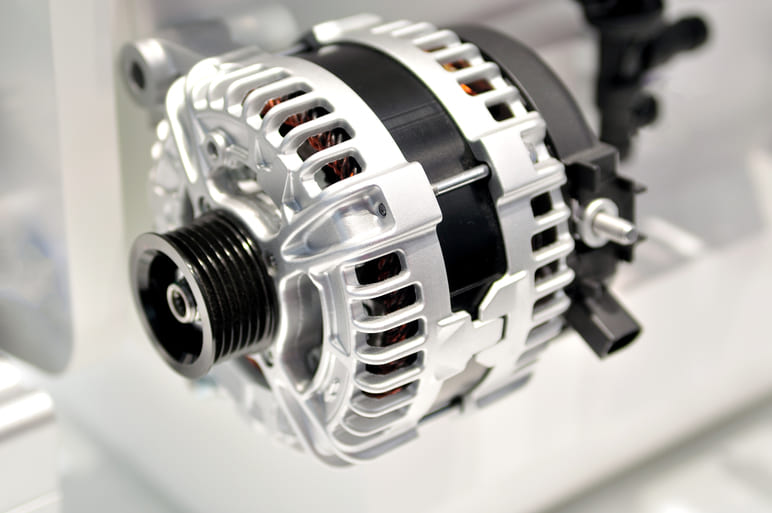
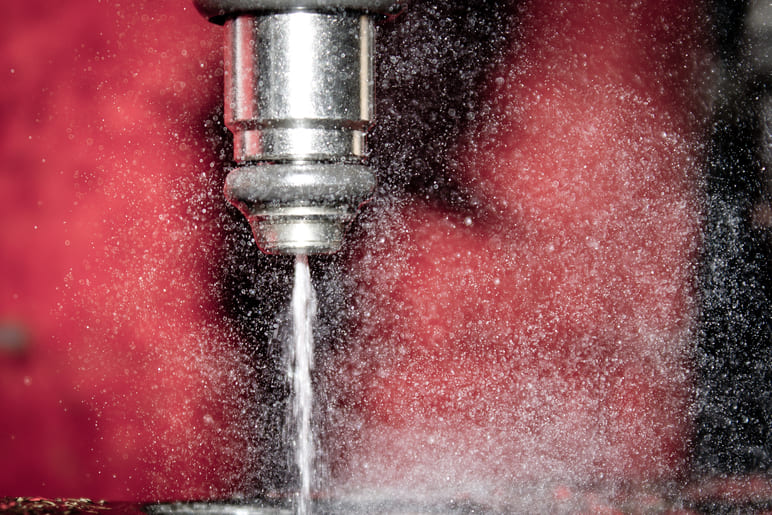
Comment